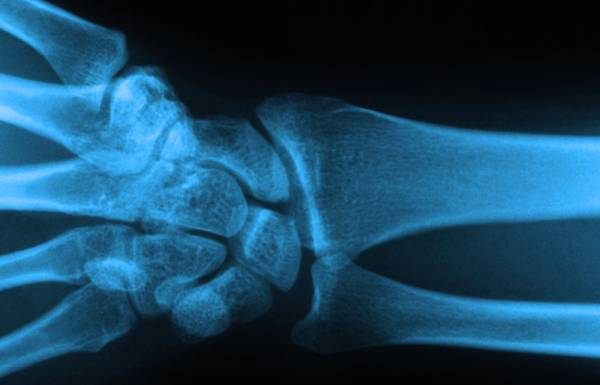What is Arthritis?
Arthritis is an inflammation of one or more joints in the body. An affected joint is usually warm, swollen, and painful, and movement is often difficult or uncomfortable.
There are many different types of arthritis that have similar symptoms, but different causes.
Some of the most common types of arthritis are: Osteoarthritis, ankylosing spondylitis, gout, and rheumatoid arthritis.
Osteoarthritis
Osteoarthritis is the most common type of joint disease. Unlike rheumatoid arthritis, it is thought to be the result of a process that has different outcomes, rather than a disease. It is characterised by the breakdown of the protective layer at the ends of the bones, called cartilage.
Cartilage is the covering on the ends of the bones that cushions the joint and protects it during movement. If the cartilage becomes worn away, the ends of the bone can become exposed. The muscles and tissues surrounding the joint can become irritated and inflamed, causing pain and stiffness.
Osteoarthritis can develop as a result of one or more of the following: Wear and tear on the joint due to age, injury to the joint through accident or sport, injury to the joint through overuse, extra stress on the joint through being overweight, previous inflammation of the joint (having rheumatoid arthritis in the joint, for example), having a family tendency to develop osteoarthritis.
The most common symptoms of osteoarthritis are pain, stiffness, and reduced movement in one or more affected joints. The symptoms of osteoarthritis usually worsen very slowly. In some people, the symptoms of osteoarthritis may disappear by themselves. (See also Osteoarthritis)
Ankylosing Spondylitis (AS)
Also known as Bekhterev’s disease, Bekhterev syndrome, and Marie-Strümpell disease, AS is an incurable inflammatory illness that affects the spine and the joints that connect the spine to the pelvic bones (the sacroiliac joints). The tendons and ligaments of these joints become inflamed where they attach to the bone, causing pain.
The main symptoms of AS are stiffness and pain in the lower back; the pain sometimes radiates down both legs as far as the knees. About one-third of patients may also have symptoms in other joints, such as the hips, knees, wrists, and shoulders.
The pain is different to that of osteoarthritis or rheumatoid arthritis in that it is usually worse first thing in the morning or after a long period of rest, but is eased by exercise.
Most people who have AS may only have mild disease with lower backpain. However, a small minority of patients will develop more severe disease. With very advanced disease, the attachment sites of the vertebrae can become damaged by the continued inflammation and bone-like material may start to form around them; a process called ossification.
These bony bridges can link the vertebrae together and eventually may fuse the spine into a stiff and inflexible position, also called ‘bamboo spine’.
The cause of AS is not known, but the disease does seem to run in families. Researchers have found a genetic marker that appears in most of the people with the disease.
AS is also strongly associated with inflammatory bowel disease (IBD), including both ulcerative colitis and Crohn’s disease, and with infection of the eye (uveitis), and acute inflammation of the eye.
Gout
Gout is caused by the accumulation of crystals of uric acid in the joints. Uric acid is a normal waste product produced by the body. Usually, uric acid in the blood is filtered out by the kidneys, but in some people the levels are so high that the excess uric acid settles out as tiny crystals. If these crystals are deposited in the joints, they can cause inflammation and severe pain.
The symptoms of gout usually appear very suddenly and violently in a single joint. The joint becomes red, swollen, hot, and painful. Very often, the big toe is affected first and then other joints, such as the feet, knees, and elbows.
The first attack of gout may last several days then disappear; there may not be another episode for many weeks, months, or years. Between episodes of gout, people are usually completely symptom free.
Gout may be triggered under certain conditions, for example, following alcoholic drinks, overeating protein-rich food, or after physical stresses such as surgery or illness.
Gout is eight times more likely to occur in men than women. It usually occurs in men between the ages of 30 and 60 years.
The likelihood of developing gout may increase if you have high blood pressure, are overweight, have diabetes, or if you drink excessive amounts of alcohol.
Rheumatoid arthritis (RA)
RA is a serious autoimmune disease, characterised by chronic inflammation and thickening of the synovial lining (membranes around the joints) eventually leading to cartilage destruction. In autoimmune diseases the immune system attacks body cells and tissues as if they were foreign invaders.
Symptoms include chronic fatigue and weakness, low grade fever, joint stiffness and painful swollen or deformed joints, weight loss.
Causes include genetic susceptibility, leaky gut syndrome, poor diet, and dysbiosis. (See also Rheumatoid Arthritis (RA) – Natural Therapies)


